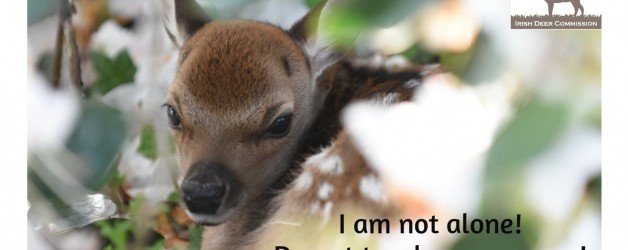May and June are an important time in the wildlife calendar as the next generation of wild deer are born, with the first of new-born calves seen in Co Kerry this week.
Of our three deer species found in Ireland, new-born Red and Sika deer, known as a calf, and Fallow deer young known as a fawn. It is important to remember that new-born deer generally do not follow their mother for the first two weeks after birth. While the mother is away feeding the young are left lying in cover to protect them from predators.
The Irish Deer Commission are asking the general-public, if they come across a young deer alone to remember they are not abandoned and should not be touched or attempt to rescue. The mother will be nearby feeding and will only return once you move away.
With many wildlife species, including deer, using silage fields as cover for new-born against predators, here are some useful tips for farmers and contractors to reduce mortality of new born deer and other wildlife during the silage cutting season.
- Cutting height: the higher the cut, the lower will be the losses suffered by crouching animals and nesting birds
- Mowing direction: mowing the field from the center outwards gives fully-grown wild animals the opportunity to escape
- Mowing date: late cuts-from mid-July on-wards-reduce the losses to wildlife during the nesting and rearing period
- Mowing strategy: mowing of partial areas, leaving edge strips not mown
- Mowing frequency: a longer interval between first and second cuttings reduces the mortality rate, especially for ground-nesting birds
- Mowing technology: cutter-bar mowers cause less harm to wild animals than rotary mowers
Ends
Irish Deer Commission membership to apply to join or renew (€20 for ordinary membership) CLICK HERE

